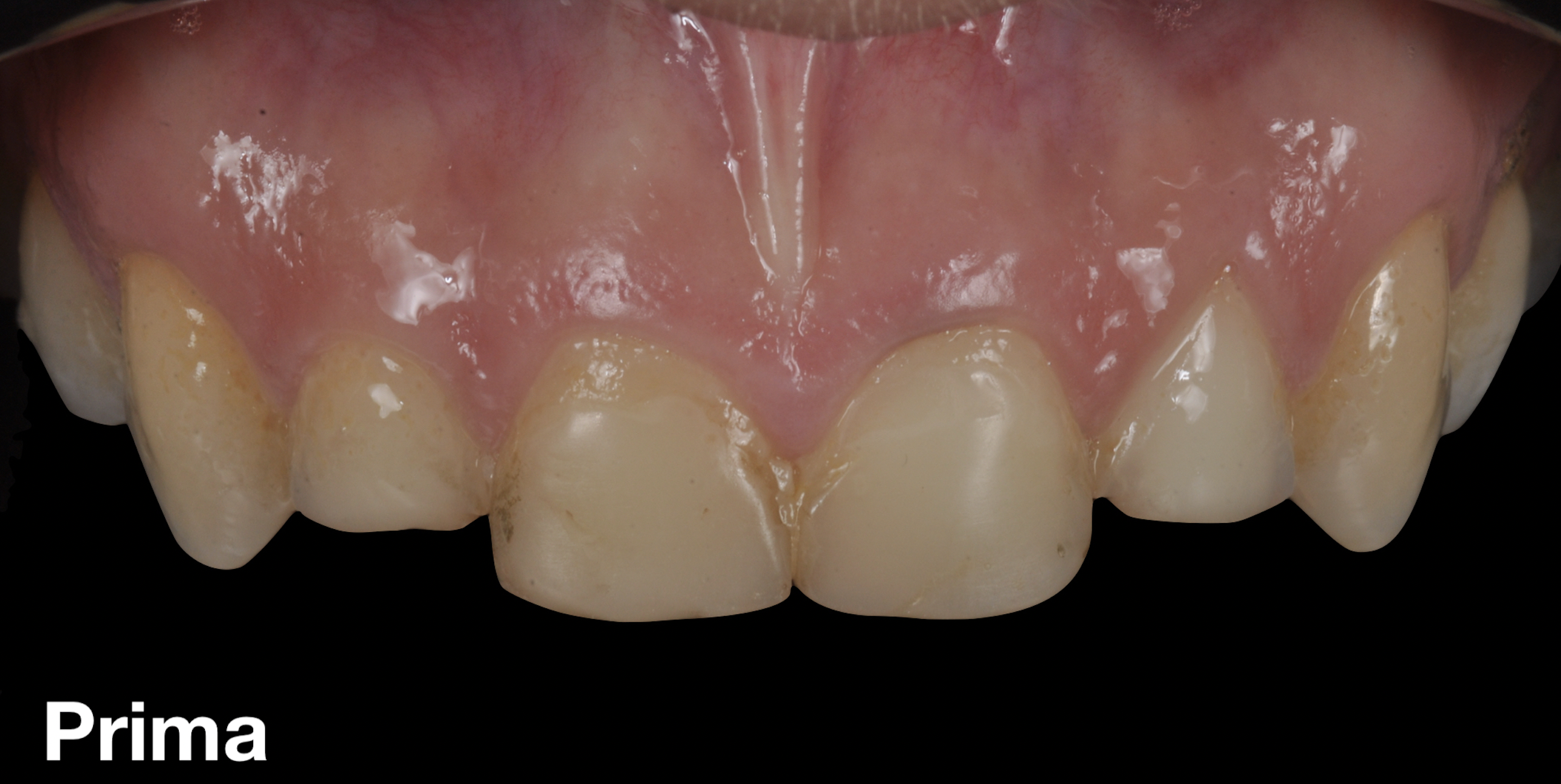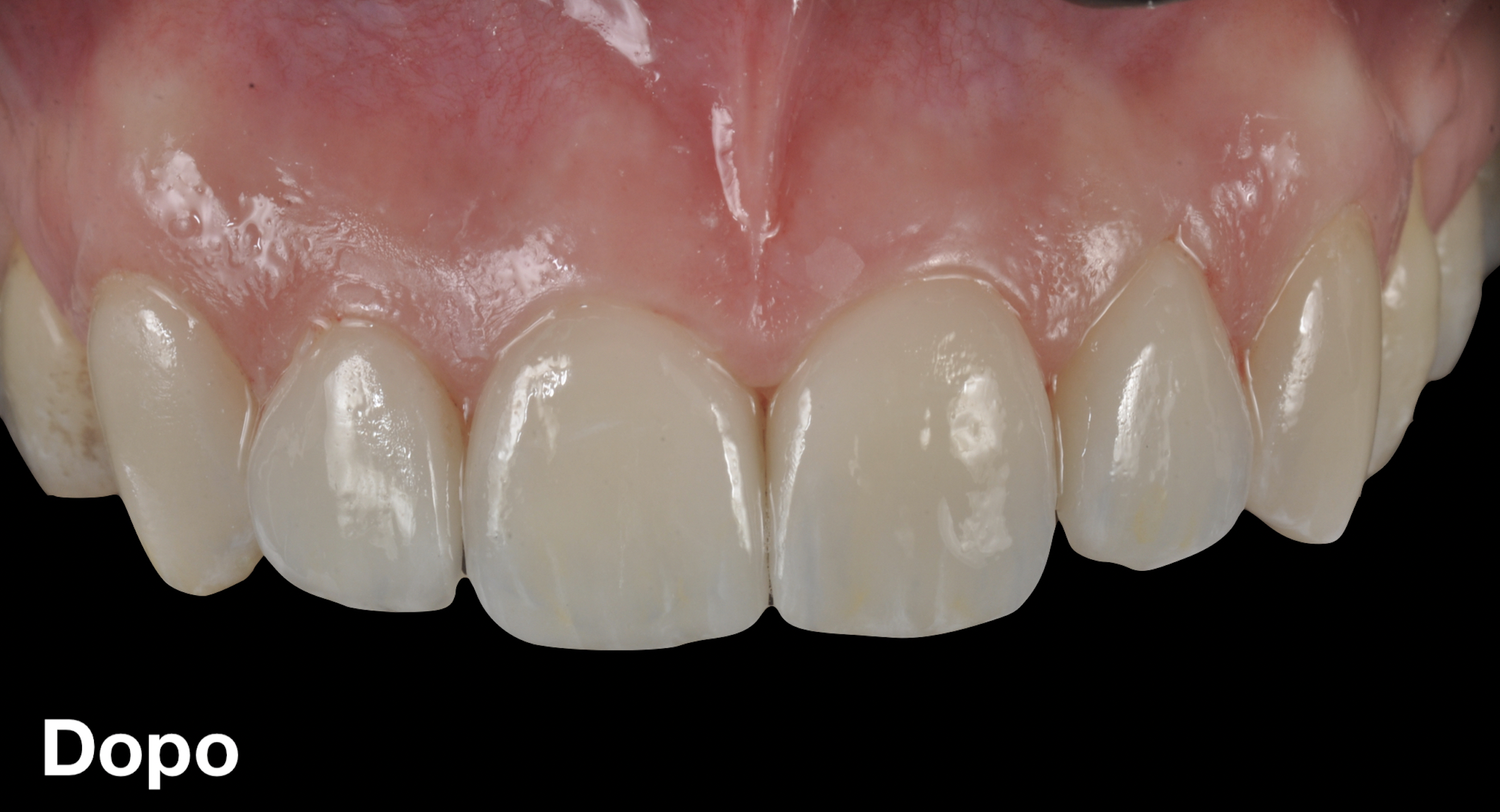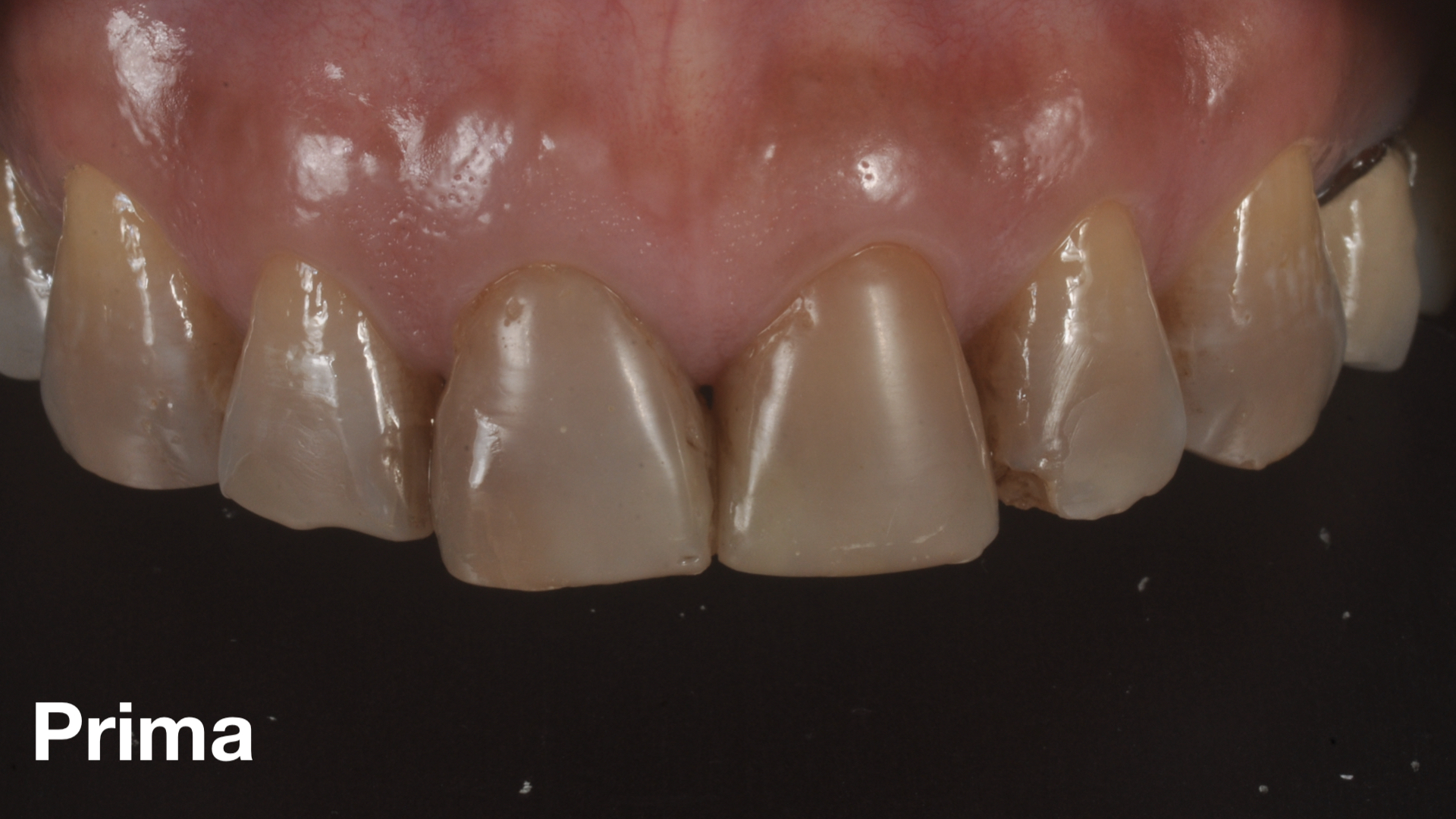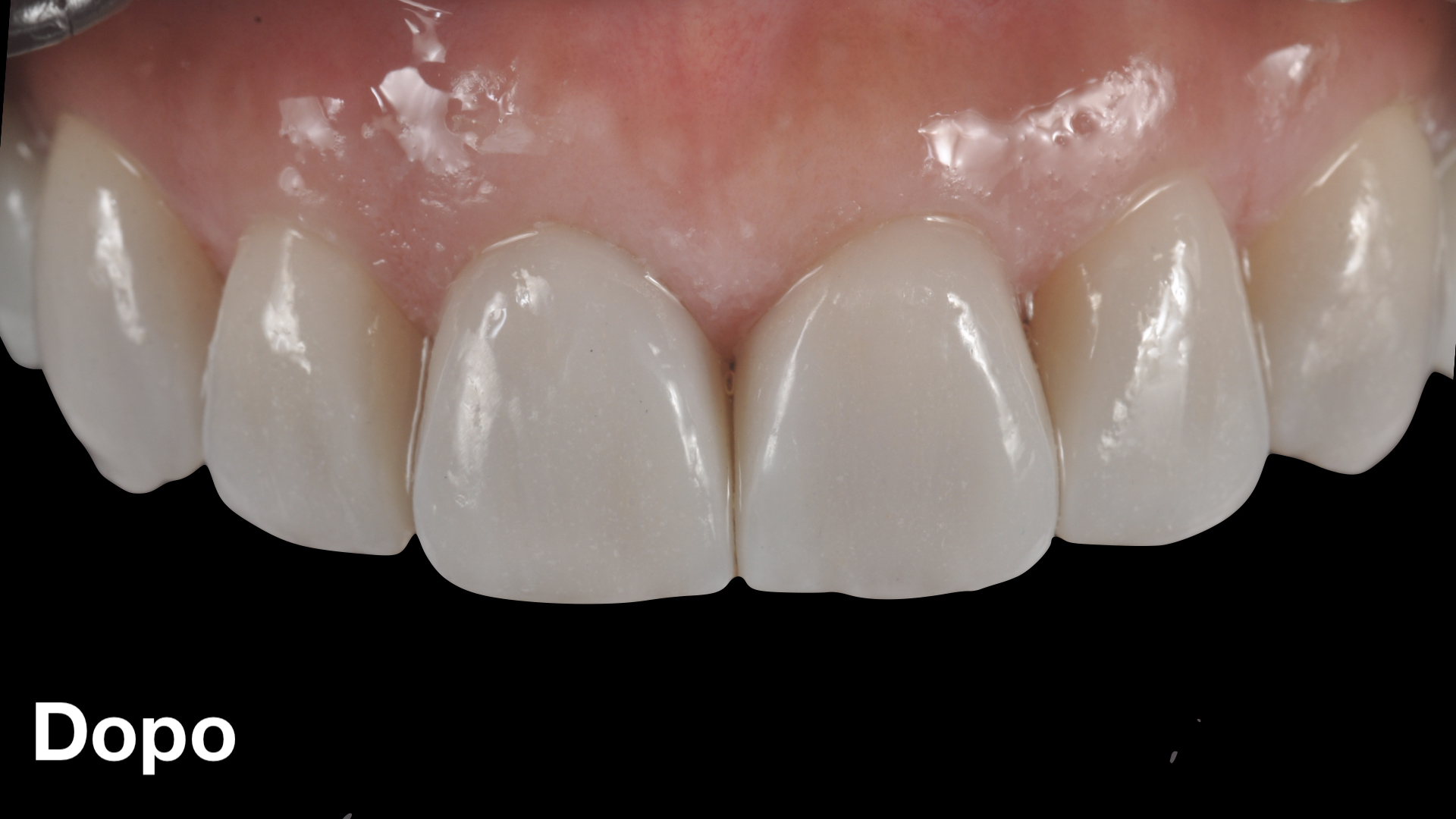We all deserve to smile spontaneously without feeling self-conscious when talking to someone or when asked to smile for a photo.
At Studio Polizzi Luongo, we have always designed and created customized smiles with excellent results.
Our consultant and specialist in aesthetic dentistry, Dr. Mario Imburgia, has developed a unique and innovative method for creating ceramic veneers based on the application of ultra-thin veneers that often do not require tooth preparation or anesthesia.
The minimal invasiveness of this technique makes it particularly suitable for rehabilitating patients who have lost tooth enamel due to bruxism or dental erosion, restoring a perfect smile, efficient chewing, and most importantly, preserving teeth that have suffered significant wear.
Often, the tooth is not even touched, but merely polished superficially, thus avoiding invasive procedures for the patient. This original technique has been published in the most important scientific journals in the field, achieving the highest long-term success rate ever reached for veneer rehabilitations.
This technique has achieved a 99.9% long-term success rate, ensuring that the patient will not only have a beautiful smile but also one that will last for years to come.
What are Veneers?
Veneers are thin ceramic laminates (up to 0.2 mm) that, once bonded to the teeth, allow substantial changes in color and shape without weakening the tooth. They can be applied to correct:
- Teeth with shape and/or color defects.
- Presence of incongruous old restorations.
- Fractured teeth.
- Diastemas (spaces between teeth).
- Teeth with enamel defects.
- Discolored teeth with permanent stains.
- Teeth with position anomalies.
- Teeth that have lost enamel due to abrasion or chemical erosion.
FAQ
Can veneers be applied to crooked teeth?
Absolutely yes. The application of veneers can realign minor misalignments that are often bothersome for the patient, giving a more harmonious appearance and more efficient function.
What happens if a tooth gets a cavity?
This is one of the most frequently asked questions by patients. Veneers are resistant to plaque acids, so it is impossible for cavities to form where the veneer is present. However, the non-visible back part of the tooth remains uncovered like a natural tooth and can be subject to decay. No worries, the tooth will be treated just like a healthy tooth, without compromising the achieved result.
How long does a veneer last?
Long-term success (over 10 years) is the result of a combination of three fundamental factors: the technique used (in our center, we use the minimally invasive technique which has received the highest recognition from the scientific community in terms of success), the accuracy in executing the protocol, and the use of top-quality materials. Last but not least, the patient’s care is crucial; it is necessary to undergo periodic check-ups just as you would with your natural teeth.
Do veneers need to be replaced after 10 years?
Absolutely not. After this period, a small revision or replacement of some units may be necessary, but only if needed. In this case, the intervention is minimal and very quick. We retain the file, the digital shape of the original veneers, and can easily reproduce it for minor re-treatments.
How do I know if I will like my new smile?
It’s very simple. We like to involve the patient in this extremely important process. Therefore, in addition to a targeted questionnaire to understand their main needs, they can temporarily wear the new smile during an aesthetic trial session or choose the best-fitting smile together with the professional, thanks to the use of advanced aesthetic design programs.
What is the main advantage of applying dental veneers?
The main advantage is finally being able to wear a bright and pleasant smile through a minimally invasive procedure. Veneers not only improve the tooth aesthetically but often also enhance its function. In many cases, they can also reinforce the tooth by restoring the layer of enamel that has been thinned or completely lost due to wear and erosion. Moreover, as mentioned before, teeth can be easily aligned without needing orthodontic movements in some cases.
Dr. Mario Imburgia, Dental Veneers Specialist
Watch the interview on National Television


















